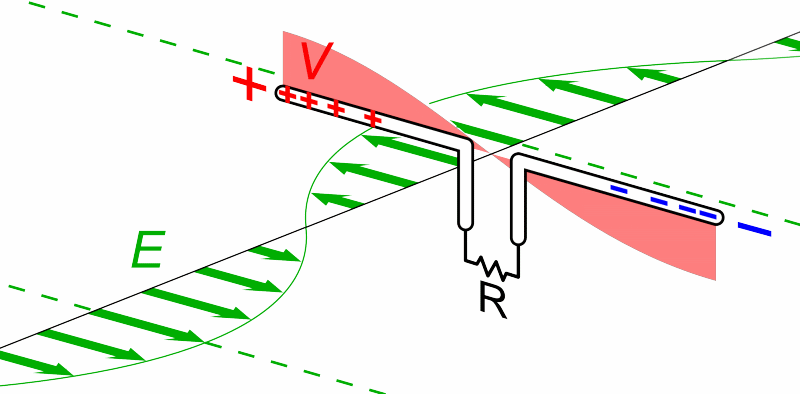I remember Feynman explained that raid waves are emitted by accelerated charged particles. So, the only the things that antenna transmitters do is just up-down oscillation of the current

simulate this circuit – Schematic created using CircuitLab
Since this wire vertical, oscillation should create the the photons flying away horizontally in all directions. But how do you close the loop? The wire cannot be infinitely long. Does it mean that you must emit the same amount of radiation in perpendicular direction? Probably it is good that you produce the bi-polarized signal, which is easier to detect. You have to wire the backward vertical current at the right distance (half wavelength) so that it is coherent and does not interfere negatively with first one at large distances. But donesn't its radiation affect the current in the first wire (and vice versa)? Can you ever have an electron oscillation in the wire without the loop? Since most antennas that I have seen are unclosed wires, I believe that you can. But, how is that ever possible?

